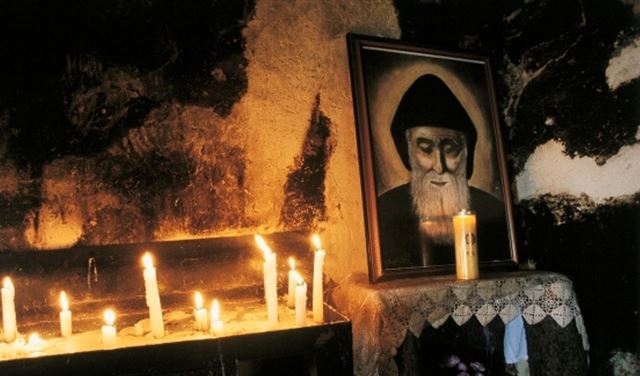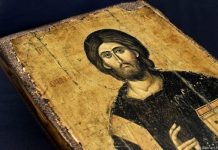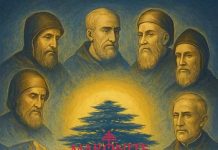ماذا كشفت “The Economist” عن القديس شربل والعجائب في لبنان؟
ليبانون ديبايت/14 كانون الأول/18
نشرت مجلة “The Economist”، في عدد الخميس 13 كانون الأوّل، مقالاً بعنوان “العجائب الى تزايد في لبنان”، تطرّقت فيه الى عجائب القديس شربل.
وأتى المقال، على ذكر قصّة السّيدة نهاد الشامي عام 1993، وأعجوبة شفائها من الشلل النصفي، وكيف بدأت صورة القديس شربل ترشح زيتاً في منزلها، وتراه في حلمها. قبل أن تشفى نهائياً من المرض. الى أن بات المصلّون من لبنان ومختلف انحاء العالم يقصدون دير عنّايا يوم 22 من كلّ شهر احتفالاً بالمعجزة.
ولفتت المجلة، الى أنّ “العجائب الى تزايد في لبنان، وذلك بحسب ما أعلن عنه الأب لويس مطر وهو الكاهن الماروني الذي يوثّق معجزات القديس شربل. إذ حقّق منذ وفاته عام 1898، 26000 معجزة”.
وإذ أكّد الأب لويس مطر، أنّ “عدد العجائب ارتفع في العامين الماضيين مقارنة مع العقود السّابقة”. أشار الى أنّ “المعجزات لم تفرّق مسلم عن مسيحي او من اي دين كان، اذ أنّ واحدة من بين كلّ عشرة منها تشفي مسلماً او يهوديّاً”.
وكشفت، أنّ “استطلاعات الرأي، أظهرت تراجع الإيمان في لبنان، وخصوصاً بين جيل الشباب، ومع ذلك فإنّ الكثيرين يقصدون الأديرة وأماكن الصلاة والروحيّين عندما يمرضون، ولطرد الأرواح الشريرة”.
وأشارت الى أنّ “معظم العجائب سجّلت خلال الحرب الأهليّة في لبنان أي بين سنة 1975 الى العام 1990، بالإضافة الى الحرب الإسرائيليّة على لبنان عام 2006”.
في أسفل المقال كاملاً بالإنكليزية والربط في مجلة الإيكونومست
https://econ.st/2QWPtbC
St Charbel to the rescue/Miracles are on the rise in Lebanon…Heavenly help for the hard-up
The Economist/December 14/18
Strange things happen to Nohad al-Shami. In 1993 her painting of St Charbel began oozing oil. Around the same time the long-dead saint appeared in her dreams. “I have come to operate on you,” he said. And so he did, curing her of hemiplegia (paralysis of half of the body), she claims. At the mountain-top monastery of Annaya, in north-west Lebanon, a mass is said every month to mark the miracle—and to pray for new ones. “The blind see and the disabled walk,” says Mrs Shami.
Miracles are on the rise in Lebanon. So says Father Louis Matar, the Maronite priest who keeps a tally of such things. St Charbel (pictured), the closest thing Lebanon has to a patron saint, gets most of the credit. He has notched up 26,000 miracles since his death in 1898, when villagers said light beamed out of his tomb. After slowing down at the start of this century, he has regained his form. “We’re seeing more miracles in these past two years than we have in the past decade,” says Father Matar.
Polls show religious faith is declining in Lebanon, especially among the young. But many people still wear amulets to ward off evil spirits and visit faith-healers when they are sick. Miracles were often reported during Lebanon’s civil war of 1975-90 and its war with Israel in 2006. Saints even get special protection under the law. Mock one and you risk jail time. In July, after news spread that St Charbel had helped a woman conceive, police interrogated two men who suggested that the saint had slept with the woman.
Studies suggest that people often turn to religion in the face of hardship. Some Lebanese may be seeking help from St Charbel to cope with a slow-burning economic crisis, staggering inequality and the threat of renewed war with Israel. “People are at best totally dependent on their sectarian leaders and at worst left out in the cold,” says Paul Tabar, an anthropologist at the Lebanese American University. “It is this precariousness that’s driving many into the arms of saints and gods.”
Fortunately, St Charbel does not discriminate. About one in ten of his miracles heals a Muslim or Jew, says Father Matar. But the saint has been caught up in the sectarianism that poisons Lebanese politics. Though the tourist trade is struggling, officials are loth to publicise his acts, which might attract more visitors. “We cannot possibly promote the miracle of a Christian saint or any other religion,” says Avedis Guidanian, the tourism minister. “It would upset other sects.” If only St Charbel could heal Lebanon’s divisions.
*This article appeared in the Middle East and Africa section of the print edition under the headline “St Charbel to the rescue”






















